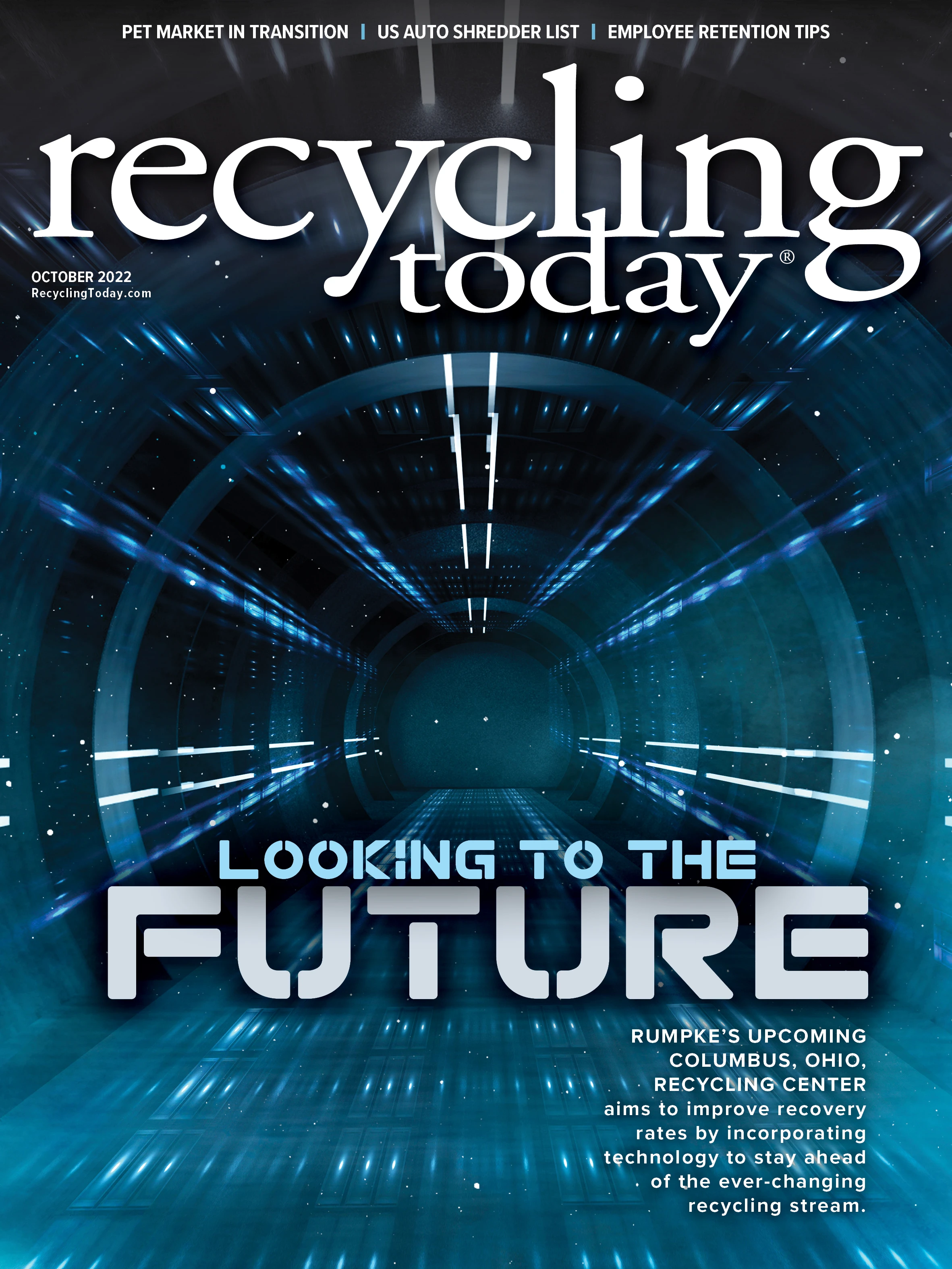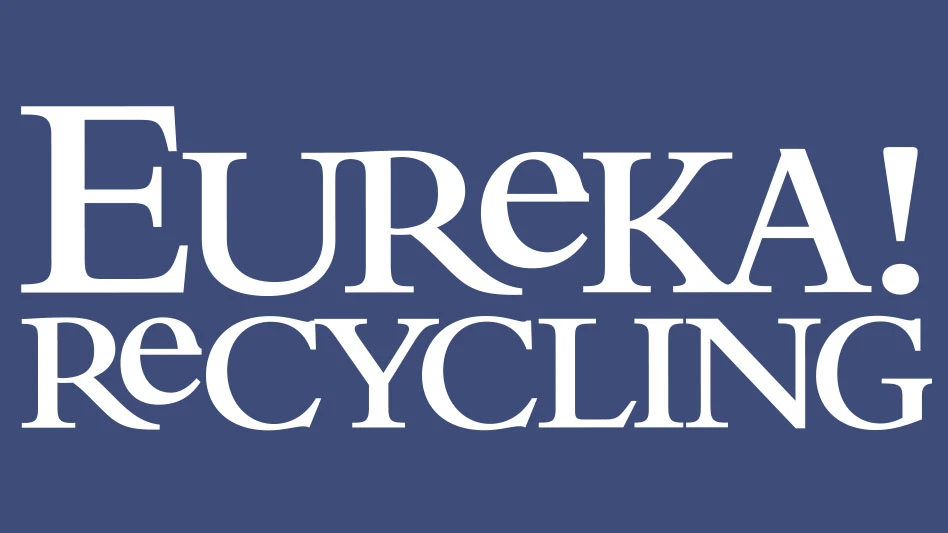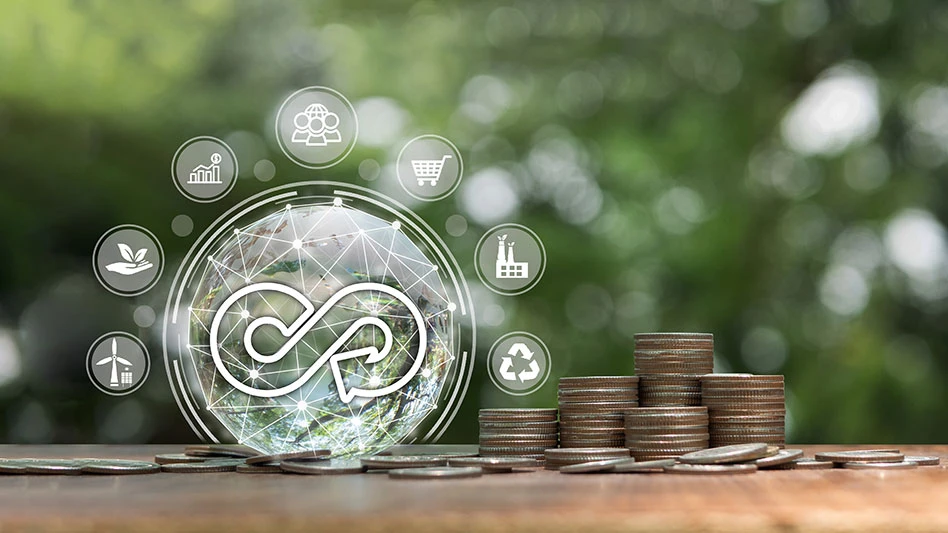
In response to concerns surrounding low plastic recycling rates, U.K.-based Economist Impact decided to research the pros and cons of various plastic recycling methods.
In fall 2021, Economist Impact researched the characteristics of a range of plastic recycling technologies. It also evaluated policy framework that might help to scale emerging plastic recycling technologies. The group received input for its research from an advisory board.
Martin Koehring, senior manager of sustainability, climate change and natural resources at Economic Impact and head of Economic Impact’s World Ocean Initiative, says the key to the group’s research was to identify where industry can invest at scale in plastic recycling technologies, particularly advanced recycling technologies such as chemolysis, noncatalytic thermal pyrolysis, catalytic pyrolysis, hydrothermal recycling, gasification and plasma pyrolysis.
“Only around 40 to 80 percent of all plastics [are] recycled in some places. There is that need to bring that rate up,” Koehring says. “Where can we put our efforts to make sure that we recycle more plastics? The current methods, particularly around mechanical recycling, are not meeting that standard. They’re not helping to bring that percentage higher. So, we need to think about ways of bringing advanced technology into this to make sure that we have a better chance of actually creating a proper circular economy for plastics.”
Economist Impact’s research resulted in a report titled, “Rethinking Plastics in a Circular Economy,” and a four-part podcast titled, “Inside the Circle,” both of which were released this year.
Based on the research, Koehring says the group determined that several advanced recycling technologies have the potential to transform plastic recycling practices and, in some cases, advanced recycling technologies can produce higher quality and higher value outputs than mechanical recycling technologies.
“Ultimately, what we want to produce out of these recycling technologies is something that can really be put back into the circular economy,” Koehring says.
Ranking technological capabilities

For the study, Economist Impact assessed three mechanical recycling technologies, six chemical recycling technologies and one biological recycling technology to determine a variety of factors, including their applicability, quality of output, efficiency, integration capabilities and scalability. Technologies the firm analyzed included melt filtration and extrusion, flake to preform, purification/dissolution, chemolysis, noncatalytic thermal pyrolysis, catalytic pyrolysis, hydrothermal recycling, gasification, plasma pyrolysis and enzymatic hydrolysis.
Overall, the six advanced recycling technologies, except for chemolysis, generally offered higher levels of applicability than mechanical or biological recycling methods, according to the study. These technologies can process a wider range of plastics, including multimaterial plastic packaging, flexibles and mixed streams, whereas traditional mechanical recycling methods tend to be more selective in the types of plastic scrap they can process.
“These more advanced recycling technologies can help to process some of these kinds of flexible packaging and multimaterial plastics,” Koehring says. “These [advanced recycling] technologies—pyrolysis, hydrothermal recycling, gasification—they get the highest scores when it comes to processing multimaterial plastics,” he says.
Advanced recycling technologies also showed the ability to produce higher quality and higher value outputs than mechanical recycling technologies based on the research. While the quality of plastic scrap tends to degrade if processed by a mechanical recycling method, scrap quality tends to stay the same or improve when processed by advanced recycling methods. Koehring says those methods typically break plastic scrap down to their monomers.
“If you can break it down to its monomers and then form something new out of it, then it’s more likely to be of higher quality,” Koehring says. “That is very unlikely to happen with mechanical technologies that don’t really break down the material,” he adds.
According to Economist Impact’s report, outputs of chemical recycling technologies “are often used for purposes other than plastic production, such as fuel production. But the oils and gases extracted from these recycling processes can be cleaned and processed into virgin-like polymers, which makes them suitable for food-grade packaging. This kind of molecular recycling also [minimizes] the degradation common in mechanical processes, so that recycled plastics can be used repeatedly at the same quality level rather than being downcycled.”
Advanced recycling challenges
Although advanced recycling technologies present good opportunities to produce high-quality products, Koehring says challenges related to scalability and feasibility of these technologies are present. When it comes to scalability, he says mechanical recycling technologies tend to rank much higher than advanced recycling technologies.
“If you look at the scores in our scorecard, we look at scalability. The more advanced you go, the less commercially viable and scalable they are,” he says, noting that all three mechanical recycling technologies ranked high for scalability. “With mechanical recycling, [it’s] already commercially viable in many places.”
According to the report, many of the advanced recycling technologies researched “are at the early stages of their development.” The report states that chemolysis and some pyrolysis technologies are used only at demonstration facilities, and enzymatic hydrolysis and plasma pyrolysis are still at the laboratory stage of development. Some operational commercial facilities are using some types of noncatalytic thermal pyrolysis and gasification, and the report notes that one hydrothermal facility is under construction.
Additionally, the report states that some chemical recycling processes are energy-intensive and can lead to higher carbon dioxide emissions unless powered by renewable energy sources. Currently, plasma pyrolysis requires the highest process temperatures followed by gasification, pyrolysis and hydrothermal recycling.
The report concludes that the chance of success for advanced recycling technologies ultimately depends “on the overall health of the wider value chain of plastic recycling. In the absence of a steady supply of plastic waste coming from upstream and sustained demand for recycled content downstream, advanced plastic recycling cannot thrive.”

Discussing potential policies
Despite the challenges surrounding scalability, Koehring says increasing demand for recycled plastics might help boost investment and research around advanced recycling technologies. He says one way to increase demand is through policy framework.
In January 2021, the European Union banned shipments of unsorted plastic to countries outside of the EU. Koehring says he thinks that was “an important first step to create incentives” for improving recycling capacity within the EU.
Additionally, Koehring says extended producer responsibility (EPR) legislation has prompted producers to take a closer look at the recyclability of their products. He adds that California’s SB 54, which passed in July, might help increase momentum for similar policies within the U.S.
“That is a very ambitious law that makes it much more stringent in terms of recycled-content rules,” he says. “As a producer or user of plastic, you can’t ignore the problems anymore because of stiff targets by 2032. With that law in California in place, I think the momentum will only increase.”
According to the report, minimum recycled-content targets are “one device to establish stable, long-term demand for recycled plastics,” noting that these can be voluntary targets set by brands or mandatory targets enforced by regulators.
Additionally, the report finds that EPR might help alleviate supply constraints for plastic recycling by holding packaging producers, importers and brand owners responsible for a product even after consumer use, incentivizing them to invest in postconsumer scrap collection, sorting and recycling. This form of policy also places the cost of postconsumer product management on brand owners.
To ensure advanced recycling facilities can operate as intended, the report states that policymakers are amending existing legislation to update the classification of these facilities in some cases. In states such as Virginia and New Jersey, lawmakers have implemented legislation to reclassify advanced recycling facilities as manufacturing plants rather than as solid waste management facilities.
Koehring concludes that a combination of policy to boost advanced recycling technologies as well as investment in those technologies are needed to improve the overall circular economy for plastics.
“[Advanced recycling technologies] are important because we are not recycling enough,” he says, citing low global recycling rates. “But we need to see it in that context of policy framework and upstream solutions that we need to create the economic incentives that are very much policy-based.”

Explore the October 2022 Issue
Check out more from this issue and find your next story to read.
Latest from Recycling Today
- Sofidel agrees to purchase Royal Paper assets
- US Plastics Pact report charts expansion path for recycled content in packaging
- USTR announces phased measures designed to address China’s shipbuilding dominance
- APR, RecyClass release partnership progress report
- Clearpoint Recycling, Enviroo sign PET supply contract
- Invista expanding ISCC Plus certification program
- Redwood partnership targets recycling of medium-format batteries
- Enfinite forms Hazardous & Specialty Waste Management Council






